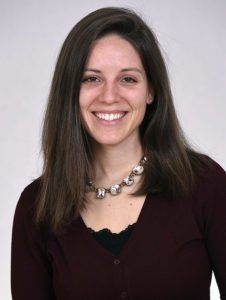People with Autism Spectrum Disorder (ASD) experience the world differently, not to a greater or lesser degree. The dynamic of one’s social abilities, expressive and receptive language development, intellectual skills, restrictive interests as well as repetitive behaviors all vary. Currently, the Diagnostic and Statistical Manual (DSM-5) identifies three levels of support to specify the Autism Spectrum diagnosis. However, each person with an Autism Spectrum Disorder diagnosis is unique. Over the years, the subjective labeling of people with Autism as high or low functioning popularized. The person’s ability to blend into a crowd, speak, self-manage, and socialize became arbitrary markers in deciding if they have high or low functioning Autism labels. This binary scale of further labeling someone with high or low functioning Autism has been adopted by a vast majority of people, including people with Autism themselves. On such a large and varied spectrum, it’s disheartening to place someone with Autism on a 2-point scale. There is no medical indicator to decide if a person is high or low functioning. Furthermore, there are risks and consequences of using such a limiting label on such a large spectrum.

Makenzie Sandler, BCBA, LBA
Director of Clinical Services
Identifying someone’s ability to function in their overall life as either high or low creates social constructs and unrealistic expectations for the person. The arbitrary label puts them in a specific lane of future opportunities or lack thereof. Sweeping generalizations and stereotypes form, such as: people that are high functioning can graduate, have jobs and live a “normal” life; and low functioning people cannot take care of themselves, have difficulty with communication, will never have a job and engage in maladaptive behaviors. There an estimated 50,000 people with Autism transitioning into adulthood every year with the majority being unemployed or underemployed (Grayson, 2017). If we ticked the boxes of high or low for each of these blossoming adults, we would be doing them a disservice and have been since they were provided this binary categorization. If we tell someone they are higher up the ladder than someone else, they feel as though they do not belong with people that have different strengths or greater challenges. Someone identified as “higher” functioning often feel that they’re smarter, stronger, and better at everything. Then when this “higher” up person joins a vocational program or group, they have an extremely difficult time adjusting because they feel that they have been misplaced with “them,” even if some of the new peers are similarly identified as “high” functioning. The person starts distancing them self from Autism rather than trying to self-manage and learn to build on their strengths while working through their challenges. This “higher” functioning person may avoid asking for help or avoid work responsibilities that they feel are beneath them.
On the contrary, the person with low functioning Autism is deemed the one that needs a substantial amount of support. This person’s support network ensures there is an extra adult to watch the person with low functioning Autism. As the person gets older, they are not exposed to as many opportunities. They become more sheltered and afforded less opportunities. The people around them hold overall lower expectations. Strengths are rarely identified or explored. Safety becomes a key priority. The person starts to internalize that the outcomes of most parts of their life are uncontrollable, they learn to be helpless and dependent on others.
Thus, the risks of categorizing someone with Autism into a high or low functioning group are significant. As children grow and develop, their strengths should be identified and abilities supported. Their challenges may be significant and should be navigated to break down barriers, increase independence and develop self-coping as well as self-management skills. Strengths, abilities and challenges should not be lumped together having the opportunity to be better than others or dependent on others. Strengths, abilities and challenges should be separated and examined on their own. Someone with an Autism Spectrum Disorder can thrive in their transition to adulthood to their best capabilities if they are supported as a unique person with opportunities to grow and challenges to overcome.
Learn more at www.LifesWORC.org and www.FamilyCenterforAutism.org. The author can be contacted at msandler@lifesworc.org or (516) 741-9000.
Resources
Grayson, A. (2017, January 9). Autism Speaks, New York Collaborates for Autism and Poses Family Foundation expand ADVICE to hire, train and retain employees on the spectrum. Retrieved from https://www.nextforautism.org/news/employing-adults-with-autism/






[…] enough, autistics respond similarly to labels on our person, especially labels that are inaccurate and misleading. Sometimes those labels are about misunderstanding our […]